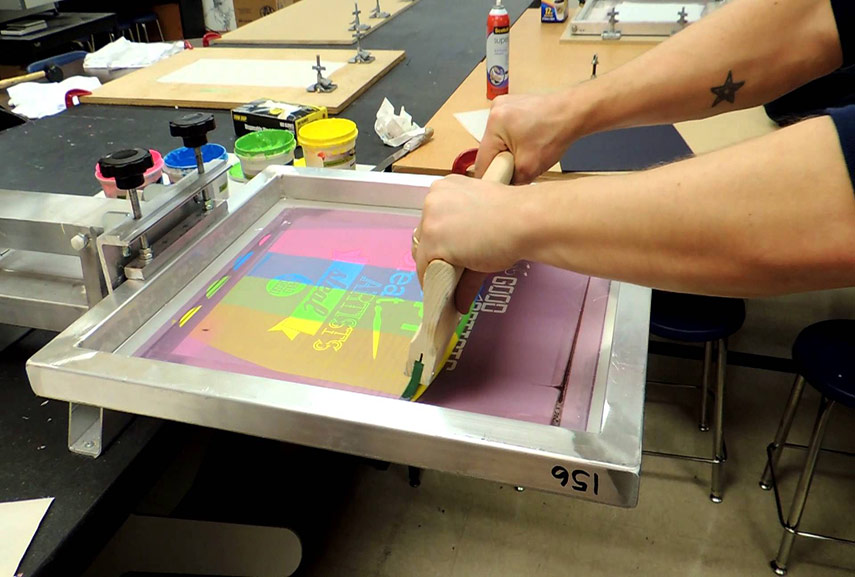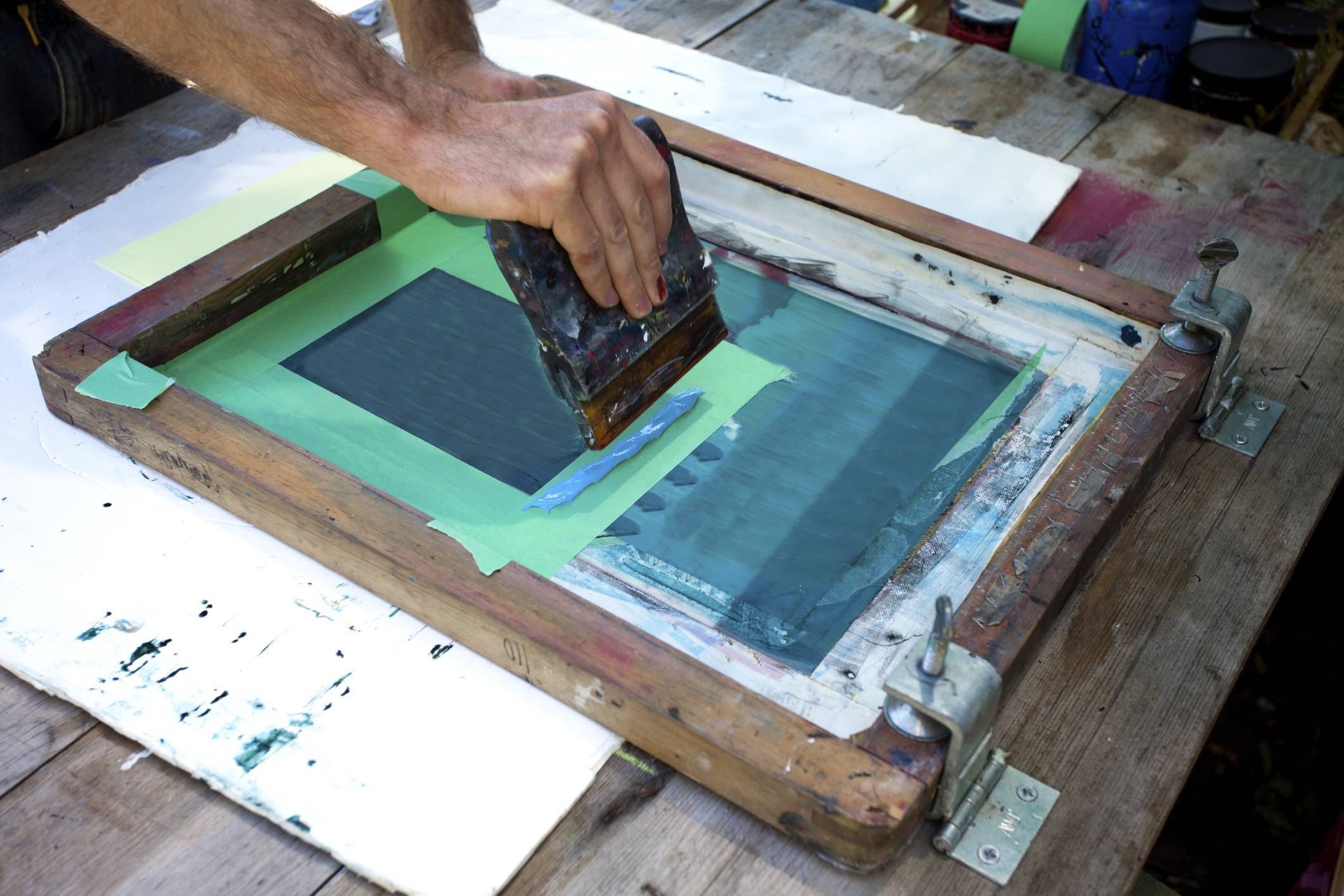ChatGPT said: 10:9 Design Embroidery success stories: how clients upgraded their brand identity
The Essential Overview to Comprehending Screen Printing and Its Versatile Uses
Screen printing has an abundant background that dates back to old times, progressing into an advanced method used across different sectors today. This overview discovers the ins and outs of the screen printing procedure, detailing its applications in fashion, advertising, and home decoration - 10:9 Design Screen Printing. Understanding these basics can open imaginative potential for both artistic and business tasks. The adhering to areas will certainly expose vital suggestions and methods to enhance one's screen printing undertakings
The History of Screen Printing
Although screen printing has roots that map back centuries, its evolution mirrors the technological and creative improvements of various societies. Coming from ancient China, the technique was at first made use of for enhancing textiles and later spread to Japan, where it became integral to Ukiyo-e woodblock printing. The method changed to Europe in the 18th century, where it obtained appeal among craftsmens and commercial printers. The innovation of picture solution in the 20th century revolutionized screen printing, permitting more elaborate layouts and higher performance. Artists like Andy Warhol further drove its appeal, using the medium to develop famous works that combined commercialism and fine art. By the late 20th century, screen printing had established itself as a flexible strategy, used in vogue, advertising and marketing, and fine art. Today, it continues to progress, integrating electronic technology and expanding its applications throughout numerous markets.
The Screen Printing Process Explained
Screen printing changes creative visions right into substantial styles via a series of exact actions. Initially, a photo is created and after that transferred onto a screen, usually constructed from great mesh material extended over a framework. A light-sensitive solution is related to the screen, which is revealed to light, hardening in locations not covered by the photo. After rinsing the unhardened emulsion, a stencil is created.
Next, the screen is positioned over the substrate, whether it be fabric, paper, or an additional material. Ink is after that pushed with the open locations of the stencil making use of a squeegee, transferring the layout onto the substratum listed below. This process can be repeated for numerous colors, calling for separate displays for each shade. Lastly, the printed product is cured using warm to guarantee the ink sticks correctly, leading to a sturdy, dynamic layout ready for use.
Sorts Of Screen Printing Techniques

In addition, specialty strategies, such as discharge screen printing, eliminate color from the textile to produce softer prints, while aluminum foil screen printing uses metal aluminum foil to accomplish a glossy finish (10:9 Design contact). Each strategy supplies distinctive characteristics, satisfying various imaginative demands and production scales, ultimately expanding the opportunities within the screen printing domain
Applications of Screen Printing in Numerous Industries

In addition, the signs and marketing fields use screen printing for producing attractive screens and banners. This approach allows for strong colors and complex styles that catch focus. In electronics, screen printing is utilized for applying conductive inks to circuit card, important for component connections. The home style industry embraces screen printing to create distinctive styles on fabrics and go now wall surface art. In general, screen printing serves as a vital tool throughout diverse areas, enhancing items with individualized and visually appealing graphics.
Tips for Successful Screen Printing Projects
While embarking on a screen printing job, cautious focus to information can significantly enhance the last outcome. Initially, picking high-grade products is vital; this includes the screen, inks, and substratums. Making use of ideal mesh counts can impact ink deposition and detail resolution. Prep work is just as essential; comprehensive cleansing of displays and appropriate exposure times ensure crisp prints.
Next off, accurate enrollment is vital for multi-color prints. Making use of alignment tools can aid accomplish precise layering. In addition, testing prints on scrap materials before manufacturing assists identify prospective problems without losing sources.

Often Asked Questions
What Materials Are Ideal for Screen Printing on Textile?
Cotton and polyester blends are ideal for screen printing on material because of their resilience and ink absorption. Additionally, specialty fabrics like silk or canvas can generate one-of-a-kind appearances and surfaces, enhancing the total design high quality.
Exactly how Do I Clean and Maintain Screen Printing Devices?
To maintain and clean screen printing devices, one must on a regular basis clean screens with proper solvents, inspect mops for wear, oil moving components, and shop all things in a dry, dust-free environment to extend their lifespan.
What Are the Ecological Effects of Screen Printing?
Screen printing can have significant environmental effects, consisting of chemical waste from solvents and inks, water usage during cleansing procedures, and energy intake. Lasting methods and eco-friendly materials are vital for decreasing these unfavorable effects.
Can Screen Printing Be Done at Home Properly?
Screen printing can be properly done at home with the best products and techniques. Enthusiasts can produce quality prints, though success depends on their ability degree, equipment, and understanding of the procedure involved.
What Are the Costs Connected With Beginning a Display Printing Business?

Beginning a screen printing service entails expenses for tools, materials, and work space. Preliminary expenses normally range from a few hundred to several thousand bucks, relying on the range, high quality of equipment, and preferred production capacity.
Screen printing has an abundant background that dates Home Page back to ancient times, progressing right into an innovative technique made use of throughout various sectors today. One more technique, rotary screen printing, employs round displays, helping with continuous printing on fabric rolls, thereby improving try this website effectiveness for large-scale productions. In addition, specialty strategies, such as discharge screen printing, eliminate color from the textile to develop softer prints, while foil screen printing applies metallic aluminum foil to attain a shiny finish. In the style sector, screen printing is commonly used to develop vibrant styles on clothing, enabling brand names to showcase their unique designs. Cotton and polyester blends are excellent for screen printing on fabric due to their longevity and ink absorption.